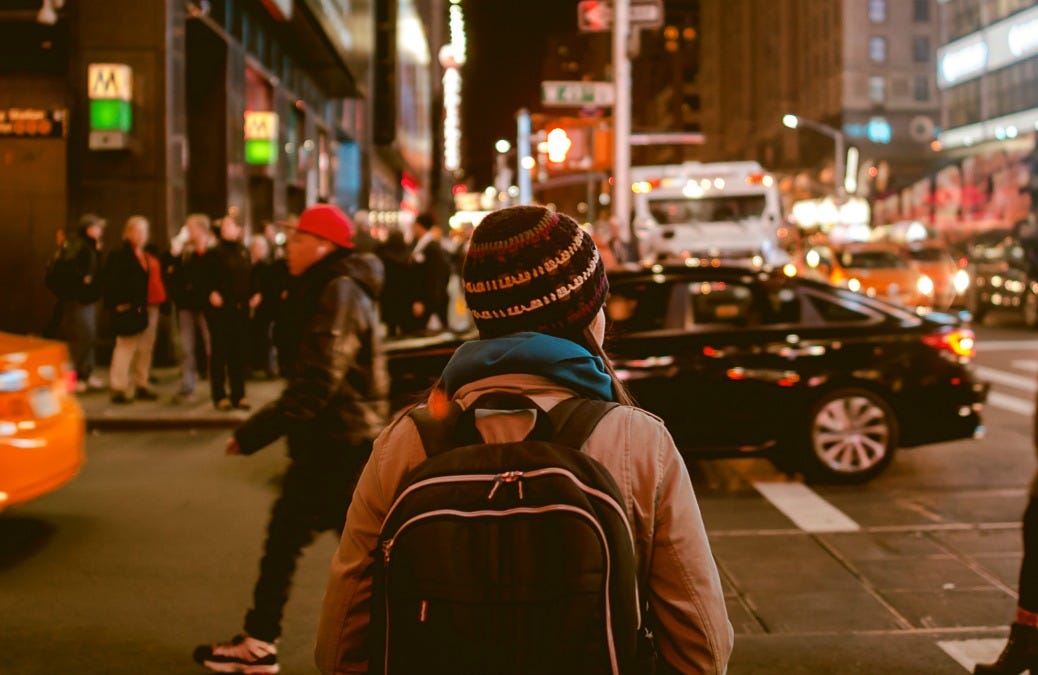How Can Cities Become More Welcoming to Domestic Climate Migrants? | The Urban Lens Newsletter
As discussed in previous postings, the U.S. is beginning to experience the early stages of a new form of domestic migration, i.e. domestic climate migration. Despite the lack of systematic quantitative data on this new pattern of movement, the growing amount of anecdotal evidence has created a network of urban policy researchers who are exploring the topic.

The scientific validity of climate change is no longer debated among climate scientists. Today’s scientific debate is focused on whether current models underestimate or overestimate the speed with which human activities are warming our planet’s climate. Just two weeks ago, one of the scientists who first called public attention to the serious consequences of global warming, James Hansen, issued a controversial new analysis claiming that the process is accelerating faster than anyone previously predicted.[i]
Whether the process is moving faster or slower than predicted, it looks like 2023 will go down in the record books as the warmest year on record across the globe. Don’t mark that down in ink though, since 2024 or 2025 may displace it. Within the U.S. the summer of 2023 was brutally hot for tens of millions of people across the West, the Southwest, and the South. One hot summer doesn’t cause people to move. But if people experience two, three, four, or five hot, hot, and hotter summers, that will create an unrelenting reality that causes people to rethink their own long-term plans.
As mentioned previously, older cities in the Great Lakes region are likely to become destinations if the gradual process of domestic climate migration begins to take hold. Data on previous eras of domestic migration point to the fact that most people in the early stages of a new era of migration will be downwardly mobile people for whom moving is their final strategy for coping with changes they find themselves unable to overcome by remaining in place. They will be reluctant migrants.
They will be the low-wage distribution center workers or low-wage manufacturing assemblers who can no longer bear the heat inside giant buildings that have no air conditioning. They will be the construction workers, electricians, plumbers, fire fighters, delivery truck drivers, landscapers, and others who work outside, whose incomes are cut because work is not tolerable for too many weeks because of the unrelenting summer heat. They will also be families who have at least one member whose asthma or other health issue is made worse by too much summer heat. They will be disproportionately minorities, including African Americans and Latinos, and some will be undocumented.
Where they move will depend partly on where they are welcomed.
One form of welcome will come from residents who are like them. So-called chain migration is an old pattern. Although most analysts use chain migration in reference to international immigration patterns, the concept holds for domestic migration too. The history of the Great Migration of African Americans from the rural South to industrial cities in the Northeast and Midwest, for example, is filled with examples of people from the same rural county, or even the same small hamlet, settling in specific neighborhoods of Detroit, Cleveland, and many other cities. Familiar people can informally help newcomers feel welcome and adjust to life in a new place.
But new scholarship also underscores the importance of more formal initiatives from local governments and nonprofit organizations in the process of successful domestic migration. Michael and Linyuan Guo-Brennan, for example, recently identified “the characteristics of a welcoming and inclusive community.”[ii]
Perhaps the most important characteristic is to have strong partnerships among local governments, nonprofits, businesses, and funders that are already focused on achieving the goals of better equity and social inclusion for existing residents. The capacity of any city to welcome newcomers, especially newcomers who are more socially diverse than long-time residents, cannot be separated from ongoing efforts to remove racism and other social barriers that long-time residents already experience.
Newcomers have real needs to be connected to programs that can help them navigate their new city’s social, cultural, and economic institutions. These connections can link them to opportunities for housing, transportation, employment, health care, and other services.
Yet, in some older cities that have experienced decline for many decades, one often hears the argument that local governments should not provide such services to newcomers, especially low-income newcomers. Newcomers, it is argued, create more competition for the limited opportunities that are available to long-term, low-income residents.
But long-time residents are often just as disconnected from these local connections as newcomers. Cities that do a good job connecting their own long-time residents to opportunities are best suited to do the same for newcomers.
On the other hand, cities that give little more than lip service to helping long-term, low-income residents experience the benefits of broad social inclusion won’t be able to deliver effective services to newcomers either. The two goals seem inseparable.
Policy makers and policy researchers will continue to debate the scale and the scope of domestic climate migration that Americans will face over the next few decades. But if this new era of domestic migration does begin to emerge, the first waves of reluctant migrants will be downwardly mobile people in search of new cities that know how to achieve better equity and inclusion for long-time residents as well as newcomers. If a city wants to welcome newcomers by connecting them to opportunities, it should learn how to connect its own long-time residents to those same opportunities.
Bob Gleeson
[i] Hansen, James. E., et. al., “Global Warming in the Pipeline,” Oxford Open Climate Change, Vol. 3, Issue 1, November 2023.
[ii] Guo-Brennan, Michael and Guo-Brennan, Linyuan (2019) “Civic Capacity and Engagement in Building Welcoming and Inclusive Communities for Newcomers: Praxis, Recommendations, and Policy Implications,” Journal of Community Engagement and Scholarship: Vol. 11: Is. 2, Article 5.
 Printer-friendly version
Printer-friendly version- Login to post comments







